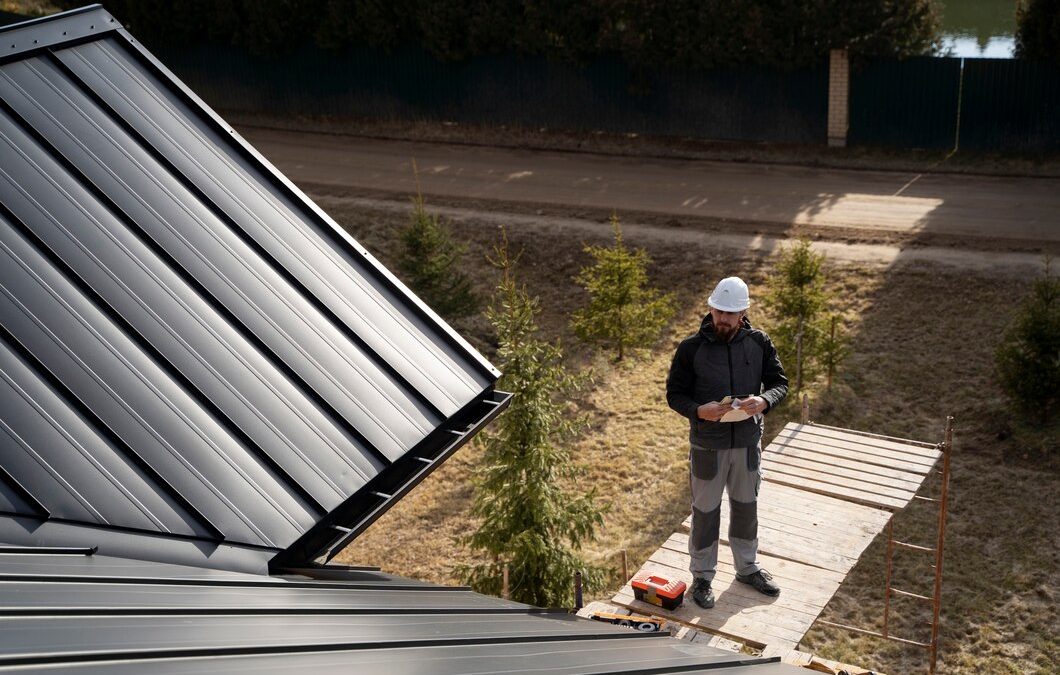TPO (Thermoplastic Olefin) roofing is a popular choice for commercial properties due to its durability, energy efficiency, and cost-effectiveness. However, like any roofing system, TPO roofs can develop issues over time. Addressing these problems promptly is crucial to maintaining the roof’s performance and longevity.
Common Problems in TTO Roofing
TPO roofing is known for its durability and strength, but it can still face various issues over time. Knowing what to look for can help you address problems before they worsen. Here are some common problems found in TPO roofs:
1. Seam Failures: One of the most frequent issues is the failure of seams. These seams can start to come apart due to poor installation or weather conditions. When seams fail, water can seep into the roof, causing leaks and other damage.
2. Punctures and Tears: TPO roofs can suffer from punctures and tears, especially in areas with heavy foot traffic or where sharp objects fall. Punctures can allow water to penetrate the membrane, leading to leaks and water damage.
3. Membrane Shrinkage: Over time, the TPO membrane may shrink, especially if exposed to prolonged periods of heat. Shrinkage can create tension in the roof, leading to cracks and other issues.
4. UV Damage: While TPO roofs are designed to be UV-resistant, continuous exposure to the sun can still cause damage over the years. UV rays can degrade the membrane, making it brittle and prone to cracking.
5. Standing Water: Improper drainage or installation can cause water to pool on the roof. Standing water can stress the TPO membrane and cause leaks or contribute to mold growth.
Step-by-Step Guide to Diagnosing TPO Roof Issues
Identifying problems in your TPO roof early can save you time and money. Follow this step-by-step guide to diagnose common TPO roof issues:
1. Visual Inspection: Start with a thorough visual inspection of the roof. Look for visible signs of damage such as cracks, punctures, or areas where the seams are coming apart. Also, check for areas where water might be pooling.
2. Touch Test: Feel the membrane for any soft or spongy areas. Soft spots can indicate water damage underneath the roof membrane. This is often a sign of leaks or water trapped under the membrane.
3. Seam Check: Inspect all the seams closely. Look for gaps or areas where the sealant might have worn away. Seam failures are common in TPO roofs and can lead to significant water damage.
4. Look for Discoloration: Changes in the color of the membrane can indicate UV damage. Discolored areas might be more brittle and are more likely to crack or tear.
5. Test Drainage: Check the drainage system when it rains. Ensure water flows away quickly and doesn’t pool on the roof. Standing water can cause many problems, including membrane degradation and mold growth.
6. Infrared Survey: For a more detailed inspection, consider hiring a professional to perform an infrared survey. This technology can detect moisture beneath the membrane, identifying leaks that are not visible during a surface inspection.
By following these steps, you can identify and address problems in your TPO roof before they escalate, ensuring the longevity and performance of your roofing system.
Effective Solutions for TPO Roofing Problems
Once you have identified problems in your TPO roofing, it’s essential to address them promptly to prevent further damage. Here are some effective solutions for common TPO roof issues:
1. Seam Repair: If you discover seam failures, resealing them is vital. Clean the affected area and apply a high-quality adhesive or seam tape specifically designed for TPO roofs. This helps prevent leaks and reinforces the roof’s integrity.
2. Puncture and Tear Fixes: Small holes and tears can often be patched with a TPO patch kit. Clean the area around the puncture, apply a primer, and then adhere the patch. For larger tears, professional repair or replacement may be necessary.
3. Shrinkage Remedies: Membrane shrinkage can be a severe issue. If you notice significant shrinkage, consult with a roofing expert. They might recommend reinforcing the affected area or, in some cases, partial roof replacement.
4. UV Protection: To combat UV damage, apply a UV-resistant coating to the roof periodically. This coating can extend the life of the membrane and maintain its flexibility and strength.
5. Improve Drainage: Address standing water by ensuring proper drainage slopes and keeping drains and gutters clear. If standing water is a persistent issue, consult a professional to modify the roof’s drainage system.
6. Professional Inspections: Regular professional inspections can catch minor issues before they become major problems. Experts can provide detailed reports and remedies for any issues they find.
Implementing these solutions can effectively address and mitigate common problems, ensuring your TTO roof remains sturdy and functional.
Preventive Maintenance Tips to Extend TPO Roof Life
Regular maintenance is crucial to extend the lifespan of a TPO roof. Implementing a consistent maintenance routine can prevent minor issues from becoming costly repairs. Here are some maintenance tips:
1. Regular Inspections: Conduct semi-annual inspections in spring and fall. Look for visible damage and test the drainage system. Regular inspections help catch problems early.
2. Clean Debris: Remove debris such as leaves, branches, and dirt from the roof. Debris can cause drainage issues and lead to water pooling, which can damage the membrane.
3. Check Seams: Inspect seams for signs of wear or separation. Reinforce or reseal seams showing signs of deterioration to prevent leaks.
4. Maintain Drainage Systems: Ensure that gutters, downspouts, and roof drains are clear and functioning properly. Proper drainage prevents water from pooling and causing damage.
5. Apply Protective Coatings: Periodically apply a UV-resistant coating to protect the membrane from sun damage. Protective coatings can also enhance the roof’s energy efficiency.
6. Professional Maintenance: Hire professionals for annual maintenance checks. They can provide thorough inspections and expert repairs to keep the roof in top shape.
Following these preventive measures can significantly extend the life of your TPO roofing, providing long-term protection for your commercial property.
Conclusion
Maintaining a TPO roof involves understanding common issues, diagnosing them correctly, and applying effective solutions. Regular inspections and preventive maintenance play a significant role in extending the roof’s life, ensuring it continues to protect your commercial property efficiently. Addressing issues such as seam failures, punctures, and UV damage promptly can save you from more extensive and costly repairs down the road.
By taking these proactive steps, you’ll ensure that your TPO roof remains in excellent condition, offering durable and reliable protection for your building. Regular upkeep not only improves performance but also enhances the value and lifespan of your roof.
For expert advice and professional roofing services, contact Mike Huddleston Roofing Systems. Our team is here to offer TPO roof repairs and more. Call us today to ensure your roof is ready to withstand the elements for years to come.

